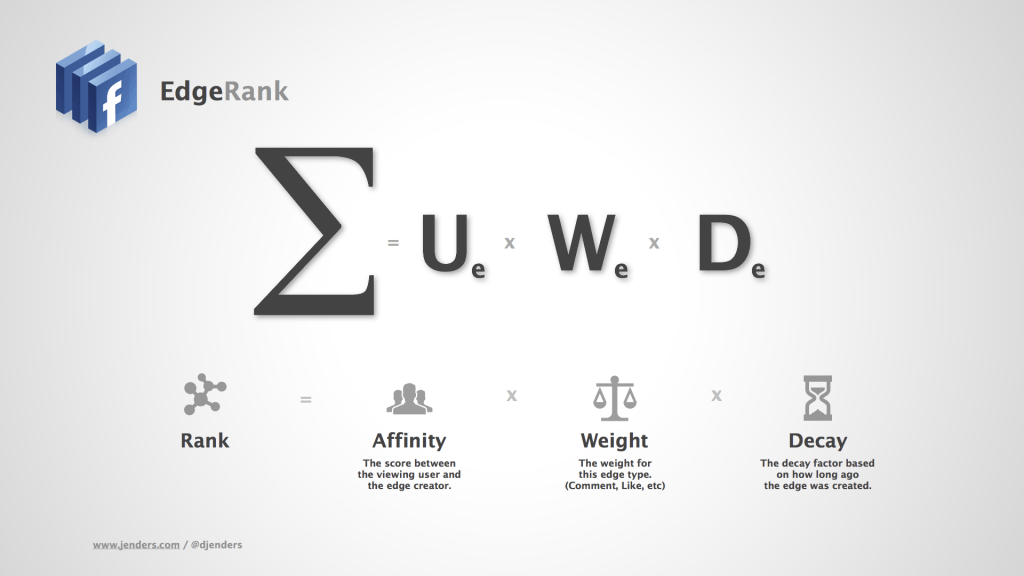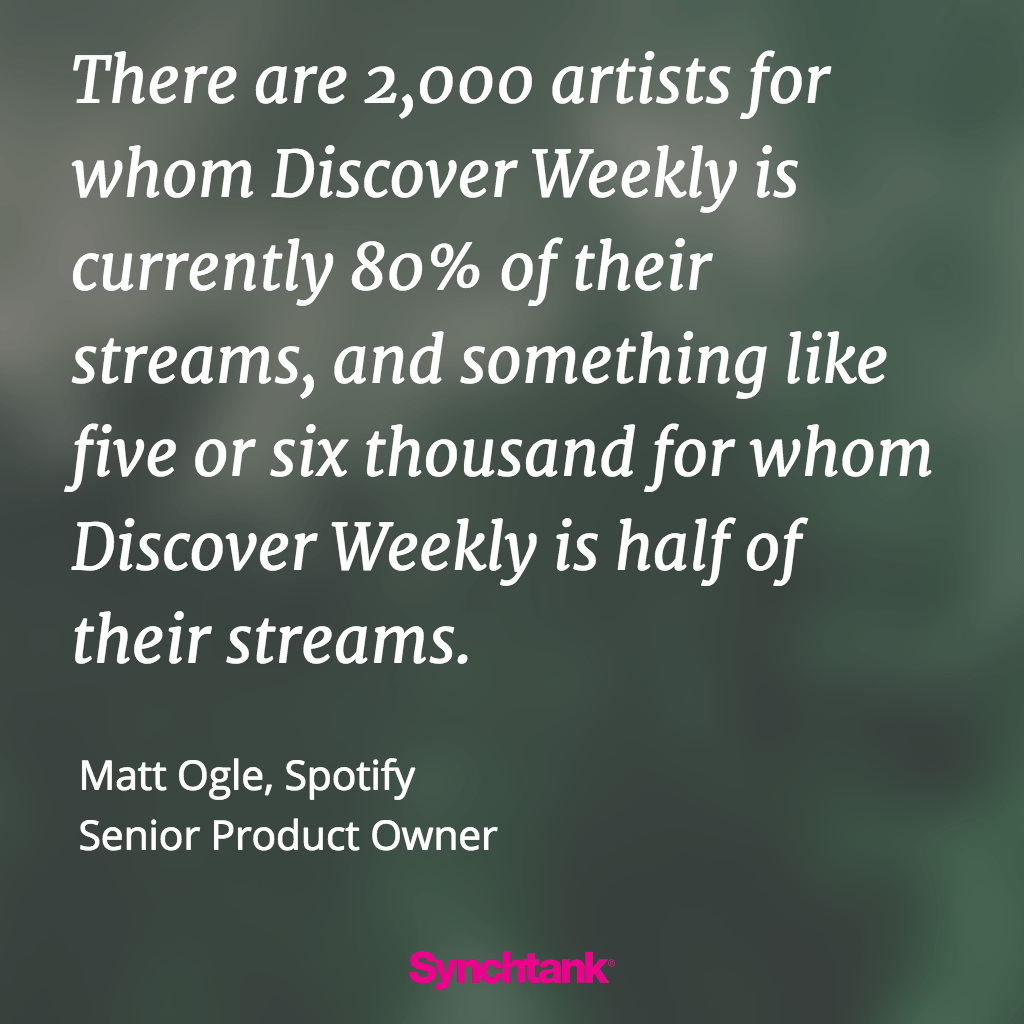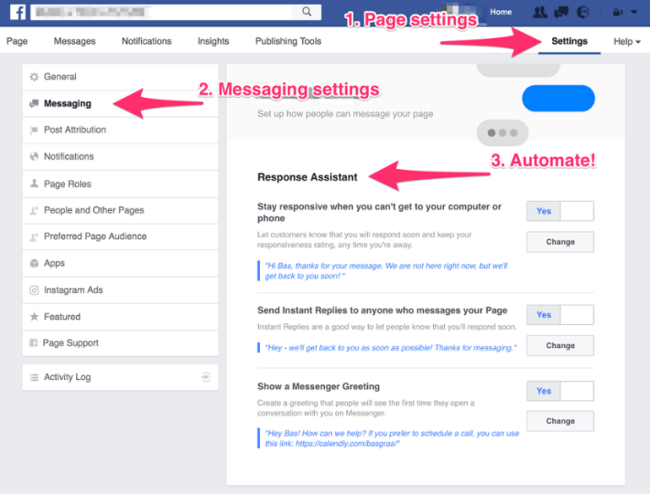In the second installment of our ‘Projecting Trends’ series, digital strategist Bas Grasmayer takes a look at bots and recommendation engines, and what they mean for the music business.
Program or be programmed. According to media theorist Douglas Rushkoff, this is one of the digital age’s most important commands. We live in an age of rapid automation. Those who do the programming get to set the rules. They steer the data and information which now generate more economic value than the global goods trade (McKinsey). This article investigates how algorithms and automated scripts affect the music economy, and how you can apply automation in your strategy.
Every time you open Facebook, algorithms decide whose posts to display to you. Every time you search on Google, algorithms decide which results get the top rank. Every time you tune into a personalized radio stream, it’s algorithms that decide what plays next.
Our lives are already dictated by algorithms.
Drivers follow the routes set out for them by their navigators. Bloggers write so-called ‘SEO-friendly’ titles and posts, so that Google’s algorithm is more likely to serve it in the search results. Social media managers try to post things that get instant results, so that they’ll get ranked higher by Facebook’s algorithm.
Facebook
An engineering manager for News Feed Ranking at Facebook once estimated there being 100,000 weight factors for ranking posts. When simplified, it comes down to three points:
- User affinity: how connected a user is to a bit of content, eg. relationship to person posting.
- Weight: each bit of content on Facebook is assigned a weight, with life events typically weighing more than link shares, shares weighing more than comments, comments weighing more than likes, etc.
- Time decay: Facebook tries to maintain a timely feed and is less likely to show older content towards the top of your newsfeed.
It’s exactly the combination of post weight and time decay that makes timing your posts important. If you post when nobody’s online, you will not get the extra weight of likes, comments or shares. Then time decay sets in, and your post goes unnoticed.
Changes to the algorithm are frequent and often sudden. Just last week, Facebook made changes to reduce the amount of clickbait in the newsfeeds of users. Clickbait refers to links with titles such as: “WATCH: This 13-Year Old Took to Stage… What Happened Next Left the Audience SHOCKED!” So if you’re considering a headline like this to promote your artist, think again.
Clickbait worked well, because it often triggered emotions and surprise and got good amounts of clicks and likes, which led to higher weighting. In a landscape dictated by algorithms, clickbait fared well and will continue to fare well, though perhaps in a different format.
Spotify
Also last week, Spotify unveiled a new feature called Release Radar. Every Friday, every Spotify user gets a personalized playlist with newly released music. It is similar to Discover Weekly, although seemingly weighted towards newer music from artists with a higher degree of familiarity to the user.
Discover Weekly helped Spotify create a habit loop, with usage peaks on Mondays. They’re now trying to extend this to Friday. This direction is important to Spotify.
It’s important to the music economy too.
Matt Ogle, the director behind the Discover Weekly and Release Radar features, revealed last March that:
“There are 2,000 artists for whom Discover Weekly is currently 80% of their streams, and something like five or six thousand for whom Discover Weekly is half of their streams.”
These are plays that these artists otherwise wouldn’t have seen. People’s attention they wouldn’t have received. Possibly leading to fans they wouldn’t have had.
Spotify carries a lot of weight. It claims 100 million monthly active users and adds 1.8 million users a month. According to the IFPI, its streaming revenues amounted to $2.9 billion in 2015. Morgan Stanley predicts streaming subscriptions will cause an industry turnaround.
That’s a big pie and algorithms are starting to decide how it gets split.
The way major labels negotiate with these services is to aggressively defend market share and expand it if possible. Most favoured nation clauses (“if anyone gets a better deal, I want it too”) are not uncommon. The leaked Sony-Spotify contract has a most favoured nation clause regarding marketing and promotion (8.a.vii, page 24). Marketing and promotion is defined to include recommendations and playlist placements (8.a.ix).
This means that Sony wants the same amount of placement playlists as other labels. This could include playlists from recommendation engines, like Release Radar, possibly resulting in Sony’s content to be weighted more heavily.
It’s a 2011 contract which is unlikely to still be in place as is, but the lesson is: companies are using their negotiation power to demand higher weights assigned in algorithms.
Bots
There’s also a more granular approach to algorithms and automation: bots. In simple terms, bots are automated scripts that are designed to perform a certain function without human intervention. Often, when you enter a support chat for a product or service, you’ll start off chatting to a bot. If it can’t help you with scripted answers from the FAQ, a real person might step in.
Bots are booming. So much so, that some people say bots are ‘the new apps’. Automated software scripts that live on the platforms you use daily. Consider Facebook’s Messenger platform, which has a billion users – equal to the active number of iOS devices in the world. Since launching its API, which lets developers plug in and make use of Facebook’s functionality, more than 11,000 bots have been created.
One of those bots belongs to one of the world’s most popular DJs: Hardwell. It lets fans send in fan art, vote on tracks for Hardwell’s weekly podcast, get access to merch, and send in voice shoutouts that may be used in the podcast. A DJ’s lifestyle is hectic, traveling all the time and busy in the studio when time permits. It leaves little time for interaction with fans, and bots like this help scale the interactivity people desire.
Another bot, perhaps less useful, is DJ Khaled’s (the famous producer and Snapchat personality) Slack bot, which delivers his critically acclaimed keys to success to your team’s Slack channel. ?
All jokes aside, here are the reasons why bots are booming:
- They help deliver personalized experiences to people;
- They allow people to interact with brands on their prefered platform, without having to install an app or visiting another website;
- They strongly benefit from recent advances in machine learning and artificial intelligence.
These 3 factors give bots a valuable level of intimacy, immediacy and accuracy.
It’s no wonder they’re ushering in a new wave of user experience design.
How to rock in the age of algorithms
The challenges are obvious. You want to make sure your work is seen, your voice is heard, your music is listened to. Here are the steps to follow:
- Understand what platforms are involved in reaching your goals;
- Understand what kind of algorithms are at play on these platforms;
- Determine how you can alter the presentation of your content to help it perform (eg. title, text used for sharing, image, time of posting);
- Determine how you can alter your content to help it perform (eg. shorter, longer, radio edit, louder, softer).
You can also introduce automation, so that you don’t have to play by other people’s algorithms as much. If you automatically message or email people whenever you have a new song, it will be less important if it somehow doesn’t do well on Facebook’s News Feed ranking.
There are dozens of tools to build your own bot. Some don’t even require coding experience. There are hundreds of examples of popular bots. A Google search will return hundreds more – if not thousands.
Not comfortable yet? Try setting up Facebook’s Response Assistant for your page. It lets you provide automated responses based on certain conditions, like your opening hours. It will give you a feeling of how the behaviour of bots gets scripted.
Familiarize yourself with IFTTT. It lets you connect different services together through IF [this] THEN [that] formulas. For instance: if there’s a new Spotify Release Radar then copy it to an archive playlist so I don’t lose it when it gets refreshed next week. Or get it in an email instead. IFTTT even has a set of recipes dedicated to music.
To understand recommendation engines, be sure to spend some time on Hydric Media’s Playground. It opens up a lot of the parameters used by Spotify’s recommendation API, so you can familiarize yourself with the weight factors at play. Maybe you’ll even stumble upon a new formula for a perfect playlist
The key is to start automating small things. Understand how automation works. IF/THEN statements, as used by IFTTT, are at the basis of programming. By automating, you’ll start to develop an innate understanding of how all these much larger things work. A necessary instinct for this day and age.
Program or be programmed.
Enjoyed this post? Why not check out Projecting Trends: 2016 in Review – Music, Blockchain, Virtual Reality, Streaming Exclusives, and Bots


